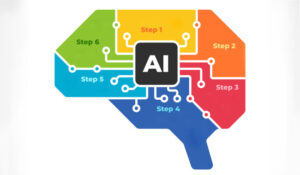Niki Lotte at Talkdesk shares insights on the four stages of CX maturity assessment for an improved customer service experience.
More than 60% of customers are extremely willing or very willing to switch brands to have a better customer service experience. Customer experience (CX) is critical to retaining and driving business and the mandate to improve it is constant.
If your CX isn’t building brand love and loyalty, it’s time to transform your CX strategy to align with your company’s business goals and impact the bottom line.
To develop a transformation strategy, look beyond traditional contact centre key performance indicators (KPIs) and instead use a holistic view of your CX to evaluate, prioritize, and enhance areas in need of improvement.
What is a Customer Experience Maturity Model?
A customer experience maturity model helps brands understand their current maturity level, set a vision for their ideal future state, and create a roadmap to get there.
Typically, organizations evaluate themselves across core areas of the contact centre, and plot their results and desired state across defined stages of CX maturity.
Customer experience maturity assessments can be done virtually or in-person as long as an experienced CX leader and knowledgeable stakeholders are leading the conversation.
It’s also common for contact centres to partner with a CX vendor or thought leader who can support and guide them in their transformation journey.
It’s important to continuously re-evaluate your state of CX maturity because there’s always room to improve as consumer expectations rise. Undergoing a CX maturity assessment helps organizations better understand where they are today and set a strategic plan for where they want to go.
The Stages of CX Maturity.
You can map your CX maturity into one of four stages:
- Beginning: Contact centres in Stage 1 are establishing customer support within their organization and are most interested in efficiency to assist their clients while maintaining low costs.
- Developing: The Stage 2 contact centre is typically aligned to touchstones like the Customer Satisfaction Score (CSAT), so the organization can more easily track their progress and has a measurable benchmark against others in their market.
- Maturing: Organizations who see the contact centre as an opportunity to generate profits, while still controlling costs and being efficient, fall into Stage 3.
- Optimizing: Stage 4 contact centres have a strong cross-functional strategy bringing in CX leaders and stakeholders from the entire organization who will use the contact centre to drive organizational goals for CX innovation.
These maturity stages give a clear indication of your current CX maturity status and areas for targeted improvement, from which you can generate a roadmap to get there.
The Core Areas of CX Maturity.
To know where to map across the four stages of CX maturity, you can evaluate your CX based on twelve core areas:
- CX philosophy: How a company identifies and adheres to a customer-first support model—often guided by a brand’s values—that informs contact centre behaviour, processes and resources.
- Routing and queueing: How a company matches and prioritizes customer context and intent with the skills of an agent and the resources available, across all channels.
- Workforce engagement management: How an organization assigns the right employees with the right skills, to the right job, at the right time, to meet demand.
- Personalization: How an organization tailors a customer’s experience based on the customer’s profile and objective.
- Account and interaction management: How an organization integrates enterprise systems to collect, maintain and distribute customer information.
- Knowledge management: How information is curated, maintained, and distributed across systems, taking into account searchability for agents and customers to find accurate information.
- Quality assurance: How an organization ensures their CX meets their goals and aligns with guiding principles by evaluating agent-customer interactions, identifying areas of improvement, and providing feedback or training for remediation.
- Feedback: How an organization delivers customer surveys, collects responses, and analyses and implements changes based on results.
- Reporting and analytics: How an organization analyses real-time and historical data to drive decisions and generate better business outcomes.
- Security: The level of maturity needed to mitigate risk against data leakage, fraud, identity theft, and privacy-related breaches and protect customer data.
- Self-service: How well a company enables customers to get the right answers and solve problems and every touchpoint themselves, while intelligently escalating complex issues to live agents.
- Employee collaboration: The capability to integrate all communications solutions, making it easy to orchestrate talents and expertise across the company.
The Benefits of a CX Maturity Assessment.
With a CX transformation strategy in place, you can move up the maturity scale at your own pace to become more customer-centric. The more strategic the contact center becomes in delivering sophisticated CX, the higher its visibility within the organization as it contributes more to business outcomes and success.
This blog post has been re-published by kind permission of Talkdesk – View the Original Article
For more information about Talkdesk - visit the Talkdesk Website
Call Centre Helper is not responsible for the content of these guest blog posts. The opinions expressed in this article are those of the author, and do not necessarily reflect those of Call Centre Helper.
Author: Talkdesk
Published On: 3rd Aug 2021
Read more about - Guest Blogs, Talkdesk






 Talkdesk is a global customer experience leader for customer-obsessed companies. Our contact center solution provides a better way for businesses and customers to engage with one another.
Talkdesk is a global customer experience leader for customer-obsessed companies. Our contact center solution provides a better way for businesses and customers to engage with one another. 


































